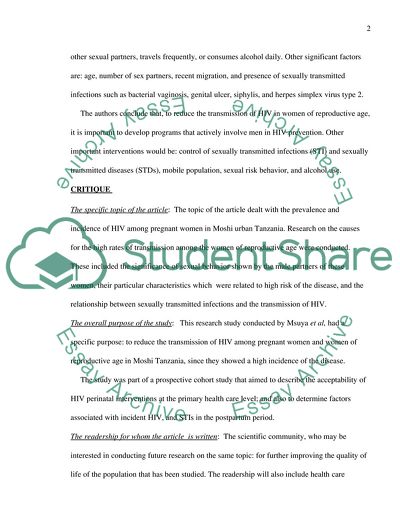Cite this document
(Analysis of HIV Among Pregnant Women in Moshi Tanzania Article by Sia Essay Example | Topics and Well Written Essays - 2000 words, n.d.)
Analysis of HIV Among Pregnant Women in Moshi Tanzania Article by Sia Essay Example | Topics and Well Written Essays - 2000 words. https://studentshare.org/health-sciences-medicine/1706251-bilogy-of-aids-and-stds
Analysis of HIV Among Pregnant Women in Moshi Tanzania Article by Sia Essay Example | Topics and Well Written Essays - 2000 words. https://studentshare.org/health-sciences-medicine/1706251-bilogy-of-aids-and-stds
(Analysis of HIV Among Pregnant Women in Moshi Tanzania Article by Sia Essay Example | Topics and Well Written Essays - 2000 Words)
Analysis of HIV Among Pregnant Women in Moshi Tanzania Article by Sia Essay Example | Topics and Well Written Essays - 2000 Words. https://studentshare.org/health-sciences-medicine/1706251-bilogy-of-aids-and-stds.
Analysis of HIV Among Pregnant Women in Moshi Tanzania Article by Sia Essay Example | Topics and Well Written Essays - 2000 Words. https://studentshare.org/health-sciences-medicine/1706251-bilogy-of-aids-and-stds.
“Analysis of HIV Among Pregnant Women in Moshi Tanzania Article by Sia Essay Example | Topics and Well Written Essays - 2000 Words”. https://studentshare.org/health-sciences-medicine/1706251-bilogy-of-aids-and-stds.


